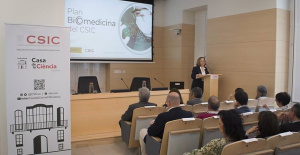The auditing firm Ernst & Young has released an Update to its ICO-analysis from 2017. In this year's Report analyzed the progress and yield of 372 ICOs. The conclusion is modest.
The most positive development shows the ICO-investment volume. This is already in the first half of the year, higher than the total volume in 2017. In contrast, the rate of return, however, is significantly negative. The majority of the analyzed ICOs (about 94 percent, or 132 ICOs) is in the red. About a third of them (approx. 43 ICOs), has fallen by more than 90 percent.
A possible reason for this poor Performance is the lack of market maturity. Although approximately ten percent more ICOs have this year a working product (or a prototype) than 2017, but 70 percent are still in the idea stage.
The Trend towards Delisting and a few winnersare not even ICOs with functioning products necessarily positive for investors. After all, many projects increasingly rely on Fiat currencies as a payment alternative. This allows you to validate your token. So accept seven out of the 25 market ICOs tires in addition to own Utility-tokens and US dollars. The most extreme step Digipulse. In August, the company announced its Delisting; 15. December will be the DGPT tokens tradable. The rate has leveled off since the announcement at Zero.
another Extreme, one also sees in the Win. The Top 10 ICOs generate 99 percent of all net income. Not surprisingly, the sectors distribution is: The slight majority of the highest-yield ICOs are Blockchain platforms.
summary and OutlookAs is the case with young technologies, the usual, fail many experiments. And ICOs are no exception. It is of concern in these, but the lack of market maturity; especially as you have collected a lot of capital. It seems to the auditors that ICO-Investments are even more risky than traditional venture capital. One of the reasons for this are the lack of product development. Based on this, the analysts expect that private investors from ICO-Investments and qualified investors (e.g. funds) to replace this.
Although the report does not indicate the fact, the reasons for the lack of product development, be helpful for a more precise assessment of the income. The true causes are likely to remain unclear. Probably a combination of fraud and incorrect assessments by the company. Many ICOs have for example. the complexity and the demand is overestimated. And possibly also the Time-to-Market Blockchain-companies just longer than a year. One indication of this is the (relatively) good return of Blockchain platforms. Since many applications depend on scalable block chains, they are waiting to be forced to not be able to bring their products to market.
In the course of this year, Ernst & Young intends to publish a further follow-up Report. Maybe scaling up solutions such as Liquid initial successes and give Blockchain applications, thus the required basis to bring their products to market.
Link to the Report: Slideshare

 Exploring Cardano: Inner Workings and Advantages of this Cryptocurrency
Exploring Cardano: Inner Workings and Advantages of this Cryptocurrency Seville.- Economy.- Innova.- STSA inaugurates its new painting and sealing hangar in San Pablo, for 18 million
Seville.- Economy.- Innova.- STSA inaugurates its new painting and sealing hangar in San Pablo, for 18 million Innova.- More than 300 volunteers join the Andalucía Compromiso Digital network in one month to facilitate access to ICT
Innova.- More than 300 volunteers join the Andalucía Compromiso Digital network in one month to facilitate access to ICT Innova.-AMP.- Ayesa acquires 51% of Sadiel, which will create new technological engineering products and expand markets
Innova.-AMP.- Ayesa acquires 51% of Sadiel, which will create new technological engineering products and expand markets The Prosecutor's Office requests that the AN investigate the detainee for terrorism for damaging an ax in a McDonalds in Badalona
The Prosecutor's Office requests that the AN investigate the detainee for terrorism for damaging an ax in a McDonalds in Badalona Balearic PSOE denounces the director of IbSalut for prevarication for renouncing the mask claim file
Balearic PSOE denounces the director of IbSalut for prevarication for renouncing the mask claim file Otxandiano reproaches that PSOE "has lent itself" to taking out ETA in the campaign, like the extreme right against Sánchez
Otxandiano reproaches that PSOE "has lent itself" to taking out ETA in the campaign, like the extreme right against Sánchez Puigdemont claims to have a "well grasp" of the State and asks to "be respected" to obtain more transfers
Puigdemont claims to have a "well grasp" of the State and asks to "be respected" to obtain more transfers How Blockchain in being used to shape the future
How Blockchain in being used to shape the future Not just BTC and ETH: Here Are Some More Interesting Coins Worth Focusing on
Not just BTC and ETH: Here Are Some More Interesting Coins Worth Focusing on Valencia displays its "innovative and technological potential" at the Emerge Americas event in Miami
Valencia displays its "innovative and technological potential" at the Emerge Americas event in Miami The CSIC incorporates the challenges of robotics, nanotechnology and AI in the new strategic plan for biomedicine
The CSIC incorporates the challenges of robotics, nanotechnology and AI in the new strategic plan for biomedicine Innovation allocates 9.1 million to train 74,000 people and guarantee digital inclusion
Innovation allocates 9.1 million to train 74,000 people and guarantee digital inclusion LIFE SPOT manages to develop new green treatments that eliminate groundwater contamination
LIFE SPOT manages to develop new green treatments that eliminate groundwater contamination A million people demonstrate in France against Macron's pension reform
A million people demonstrate in France against Macron's pension reform Russia launches several missiles against "critical infrastructure" in the city of Zaporizhia
Russia launches several missiles against "critical infrastructure" in the city of Zaporizhia A "procession" remembers the dead of the Calabria shipwreck as bodies continue to wash up on the shore
A "procession" remembers the dead of the Calabria shipwreck as bodies continue to wash up on the shore Prison sentences handed down for three prominent Hong Kong pro-democracy activists
Prison sentences handed down for three prominent Hong Kong pro-democracy activists ETH continues to leave trading platforms, Ethereum balance on exchanges lowest in 3 years
ETH continues to leave trading platforms, Ethereum balance on exchanges lowest in 3 years Investors invest $450 million in Consensys, Ethereum incubator now valued at $7 billion
Investors invest $450 million in Consensys, Ethereum incubator now valued at $7 billion Alchemy Integrates Ethereum L2 Product Starknet to Enhance Web3 Scalability at a Price 100x Lower Than L1 Fees
Alchemy Integrates Ethereum L2 Product Starknet to Enhance Web3 Scalability at a Price 100x Lower Than L1 Fees Mining Report: Bitcoin's Electricity Consumption Declines by 25% in Q1 2022
Mining Report: Bitcoin's Electricity Consumption Declines by 25% in Q1 2022 Oil-to-Bitcoin Mining Firm Crusoe Energy Systems Raised $505 Million
Oil-to-Bitcoin Mining Firm Crusoe Energy Systems Raised $505 Million Microbt reveals the latest Bitcoin mining rigs -- Machines produce up to 126 TH/s with custom 5nm chip design
Microbt reveals the latest Bitcoin mining rigs -- Machines produce up to 126 TH/s with custom 5nm chip design Bitcoin's Mining Difficulty Hits a Lifetime High, With More Than 90% of BTC Supply Issued
Bitcoin's Mining Difficulty Hits a Lifetime High, With More Than 90% of BTC Supply Issued The Biggest Movers are Near, EOS, and RUNE during Friday's Selloff
The Biggest Movers are Near, EOS, and RUNE during Friday's Selloff Global Markets Spooked by a Hawkish Fed and Covid, Stocks and Crypto Gain After Musk Buys Twitter
Global Markets Spooked by a Hawkish Fed and Covid, Stocks and Crypto Gain After Musk Buys Twitter Bitso to offset carbon emissions from the Trading Platform's ERC20, ETH, and BTC Transactions
Bitso to offset carbon emissions from the Trading Platform's ERC20, ETH, and BTC Transactions Draftkings Announces 2022 College Hoops NFT Selection for March Madness
Draftkings Announces 2022 College Hoops NFT Selection for March Madness






















